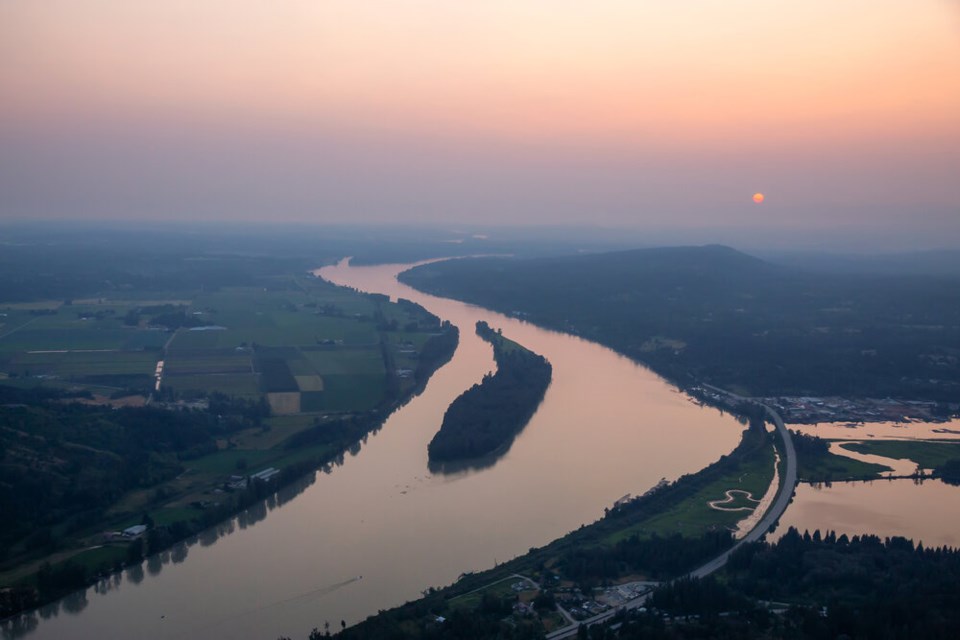Wildfires are having a significant impact on water quality in British Columbia’s largest river, a new study has found.
The , published last month in the journal Science of the Total Environment, raises questions over when a confluence of heavy metals — including arsenic, cadmium, copper, lead and zinc — may start to negatively impact everything from spawning salmon to coastal oyster farms and the humans that consume them.
Emily Brown, a research scientist at the University of British Columbia's Institute for Oceans and Fisheries who led the study, examined two decades of data from five federal water quality monitoring stations in the Fraser River.
Between 2000 and 2020, wildfires washing contaminants into tributaries accounted for 16.3 per cent of the variance in water quality across the Fraser River basin, the study found.
“It's actually a really surprisingly high number,” said Brown.
Wildfires have long been a natural source of heavy metals, sediment and nutrients. But according to Brown, the concentration of those materials has a limit beyond which animal life, especially fish, struggles to develop, survive and reproduce.
The concern, said the scientist, is that climate change is expected to drive more large and powerful wildfires more often. As the scale of fire grows, so too does the amount of contaminants making into the Fraser, and eventually, its terminus in the Salish Sea.
Wildfire contaminants could lead to widespread knock-on effects
Peter Ross is a former research scientist with Fisheries and Oceans Canada who now leads Raincoast Conservation Foundation’s Healthy Waters program.
He said his team has repeatedly found wildfire contamination in B.C.’s waterways. But when it comes to pollutants, B.C. and federal guidelines only cover 10 per cent of what is out there and could harm wildlife, he said.
“Those guidelines are only available for a minority of the pollutants that are out there,” said Ross, who wasn’t involved in Brown’s study. “They really don’t give a complete picture of risk.”
What contaminants have been identified suggests B.C.'s incinerated forests are making it into the bodies of a number of creatures hundreds, if not thousands, of kilometres away.
Past studies have found wildfire-related toxins are poisoning the Salish Sea’s . The scale of contaminants flowing down the Fraser River is one way the cetaceans could be absorbing the compounds, according to Brown.
A potentially even more consequential knock-on effect comes from a potential rise in nutrients getting washed from wildfires into rivers. Once those nutrients make it to the ocean, they could spark an overgrowth of algae, robbing the sea of oxygen critical to fish and other marine life, Brown said.
Potential decline in ocean-bound 'black carbon'
In a second published this winter in the journal JGR: Biogeosciences, Brown led a group of researchers looking at how climate change is altering the transport of “black carbon” from burned forests, into rivers and the deep ocean.
A byproduct of fire, black carbon persists in the environment longer than other forms of the molecule. While wildfires inevitably release large volumes of greenhouse gases, some of the carbon produced in the combustion process is washed out of burned forests when snow melts in the spring.
The rush of freshet meltwater tends to send the black carbon down the river system quickly in relatively big chunks. Brown said there’s a theory among scientists that the black carbon then sinks to the bottom of the ocean — locking it away from the atmosphere and diminishing wildfire's overall impact on climate change.
“This formation of black carbon is potentially this long-term kind of carbon sequestration mechanism,” said the scientist.
But as climate change increases average temperatures, much of the snow-fed reaches of the Fraser River are transforming into rain-dominated tributaries. Stretched over a longer period of time, the constant flow of water is more likely to break up the black carbon before it's washed downstream, Brown said.
“So instead of sinking to the bottom of the ocean and being sequestered, it would be able to be broken down more quickly and then release back to the atmosphere as carbon dioxide,” she said.





